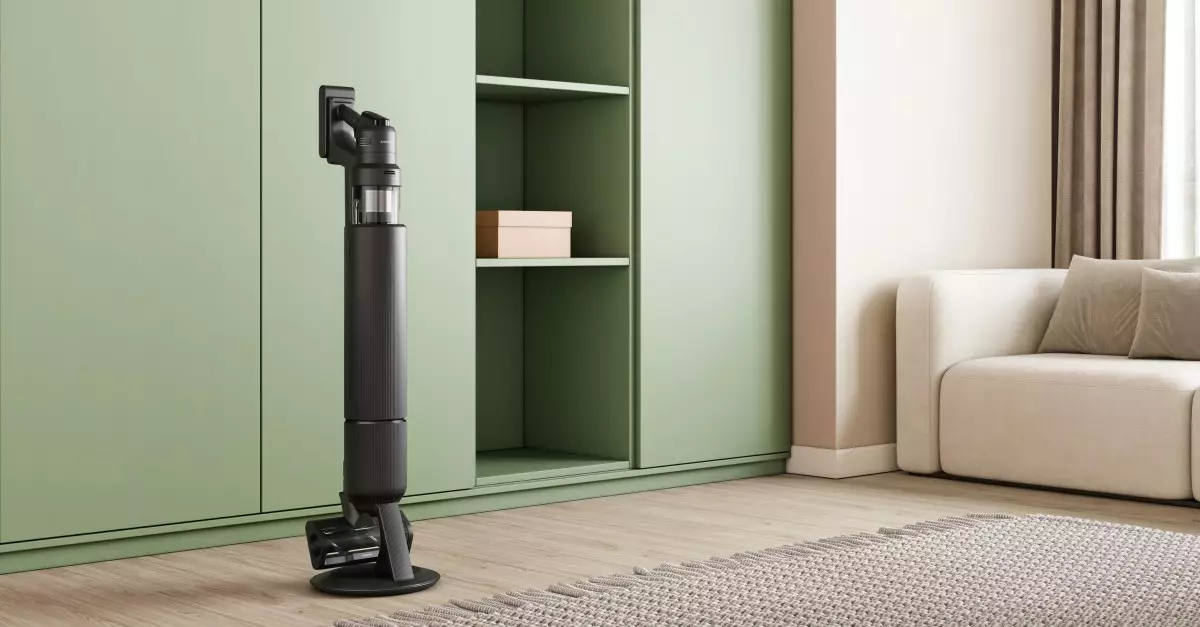In an era increasingly defined by connectivity, Samsung has taken an ambitious leap forward with its innovative line of home appliances, notably the Bespoke Jet AI. The paradigm shift towards smart technology in domestic settings is not just about enhancing convenience; it’s about redefining the very nature of how we engage with our homes. Samsung’s latest offerings, from vacuum cleaners to laundry machines, echo the whispers of a future where every household chore is seamlessly integrated with smart technology, bearing the promise of not just efficiency, but an almost telepathic interaction with our devices.
Complexity Meets Simplicity
With a price tag of $1,099, the Bespoke AI Jet Ultra vacuum cleaner is loaded with features designed to elevate your cleaning experience. An impressive LCD display is now your interface for more than just knowing the power level or battery life. Imagine receiving an incoming call notification while vacuuming, circumventing the frustration of missed messages amid chore time. It’s a blend of convenience and modernity that invites skepticism; can we really afford to embed such complex technology into every nook and cranny of our homes?
The $3,099 Bespoke AI Laundry Vented Combo washer/dryer is another testament to Samsung’s vision. Integrated screens not only enhance usability but also allow for an unexpected characteristic: taking calls while you load laundry. This feature, while intriguing, leads one to question why it’s necessary to manage phone calls through an appliance when other solutions exist. Therein lies the paradox of this technological push — while it is undeniably innovative, it sometimes feels like excessive luxury rather than a true necessity.
AI Home: An Integrated Ecosystem
Samsung’s concept of “AI Home” represents more than an array of smart devices; it’s a comprehensive ecosystem designed to simplify our lives. By connecting various household appliances via a unified SmartThings platform, Samsung promises operational harmony—one that makes it easier for users to manage their homes. There’s something captivating about having a refrigerator that can suggest recipes based on your available ingredients, and syncing these suggestions directly to your oven, which would eliminate guesswork.
Still, reliance on interconnected devices raises significant concerns. The more we depend on technology to execute simple tasks, the less we engage in the tactile, often therapeutic regularity of household chores. Additionally, issues of obsolescence come into play, as these integrated systems could potentially become outdated faster than their manual counterparts. While modern tech can offer conveniences, the underlying question remains: are we surrendering our autonomy to a collection of screens and sensors?
The Drawbacks of Over-Screening
While Samsung’s envisioning of screens spread across our appliances showcases a commitment to innovation, it evokes a coffee-fueled debate on its necessity. The expansive use of LCD displays opens doors to intricate functionalities, yet a part of the narrative hints at overkill. Wouldn’t a central smart display serve the same purpose at a fraction of the cost, negating the need for multiple screens that might not endure the wear and tear of daily life?
Moreover, the opportunity for these devices to serve advertisements is a looming concern. The digital realm has already infiltrated our spaces, and the last thing consumers need is to be further bombarded with targeted marketing and ads while attempting to go about their daily tasks. Samsung has not yet ventured into displaying advertisements on its appliances, but the potential feels eerily tangible and creates aversion.
Bridging the Technology Gap
For many users, the leap into a fully automated home can feel daunting. Samsung’s efforts may cater to tech-savvy individuals or those who have embraced the smart home revolution. However, there remains a significant portion of the population that either lacks the resources or the desire to integrate such technology into their lives. This disparity highlights the need for inclusivity in technological advancement—one that embraces the varying degrees of digital literacy and financial capability among households.
Skepticism aside, Samsung’s commitment to pioneering smart home evolution is commendable. Their approach challenges the status quo, inviting us to envision our homes not just as living spaces but as responsive entities in tune with our needs. As the world sways towards a more connectivity-centered lifestyle, one can only hope that this foresight does not compromise simplicity, personalization, or, importantly, the comfort of human touch in our everyday tasks.
With the innovations embodied by products like the Bespoke Jet AI, the real question looms large—can we truly balance technological integration without losing the essential connections and engagement that make our homes uniquely ours?

